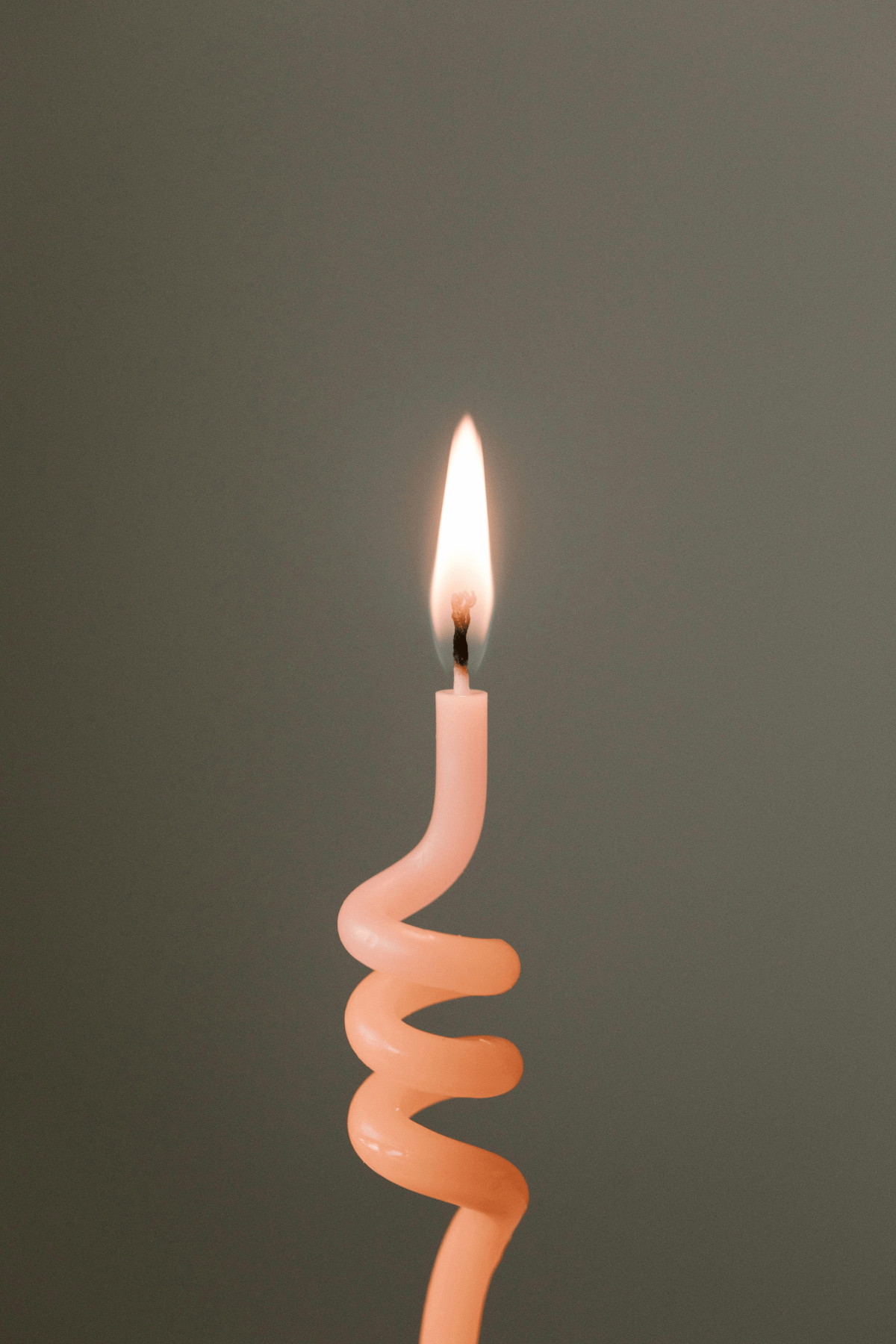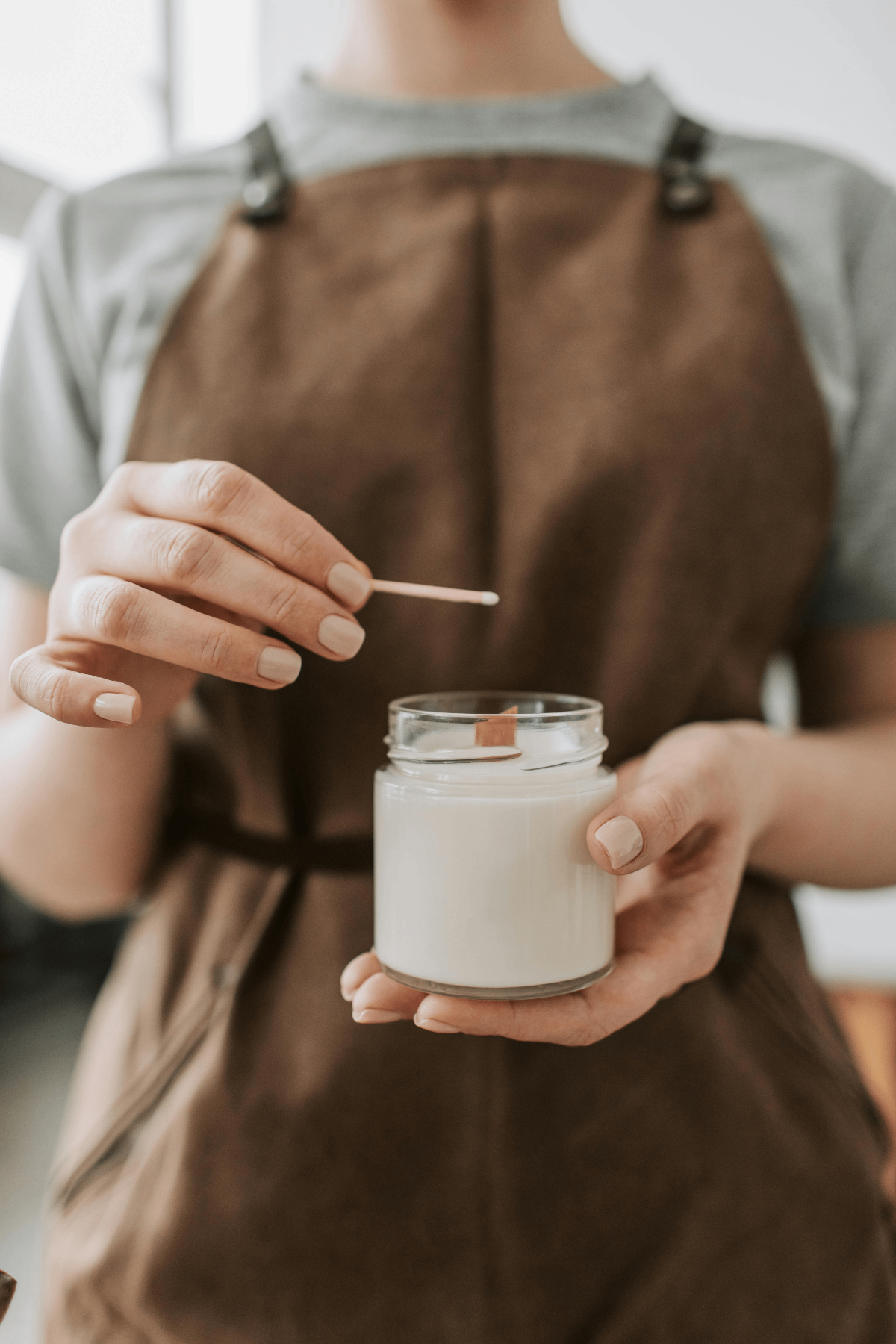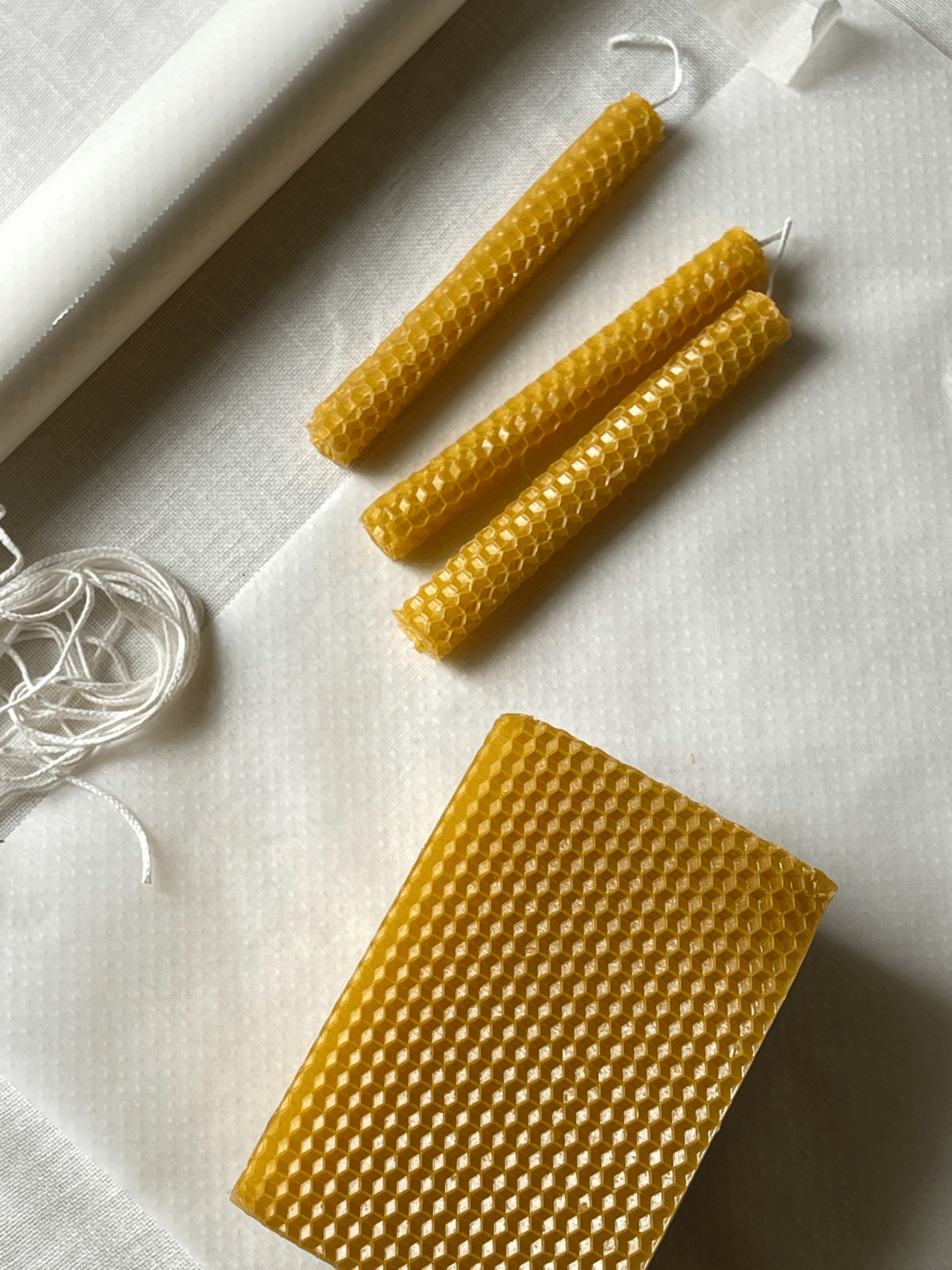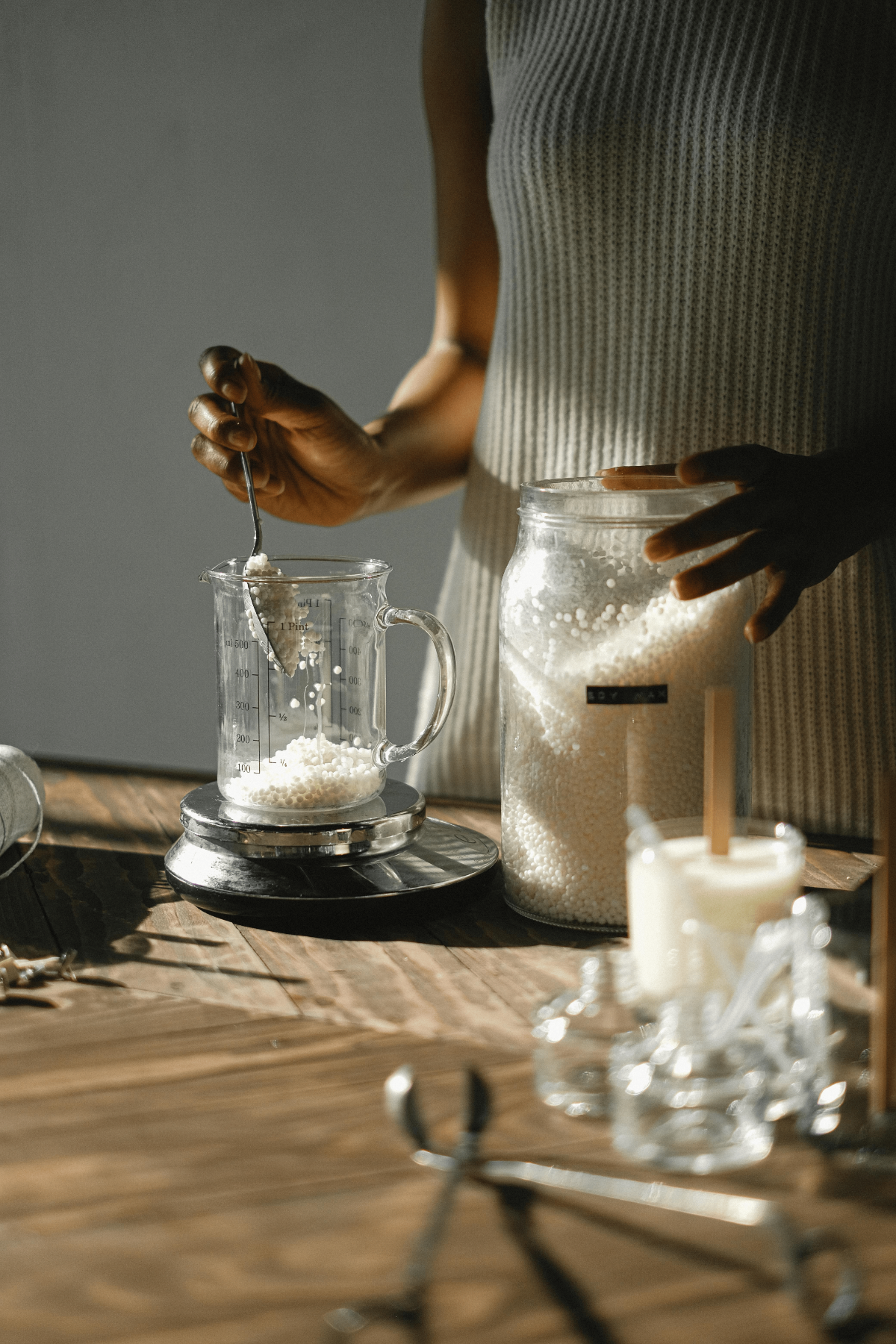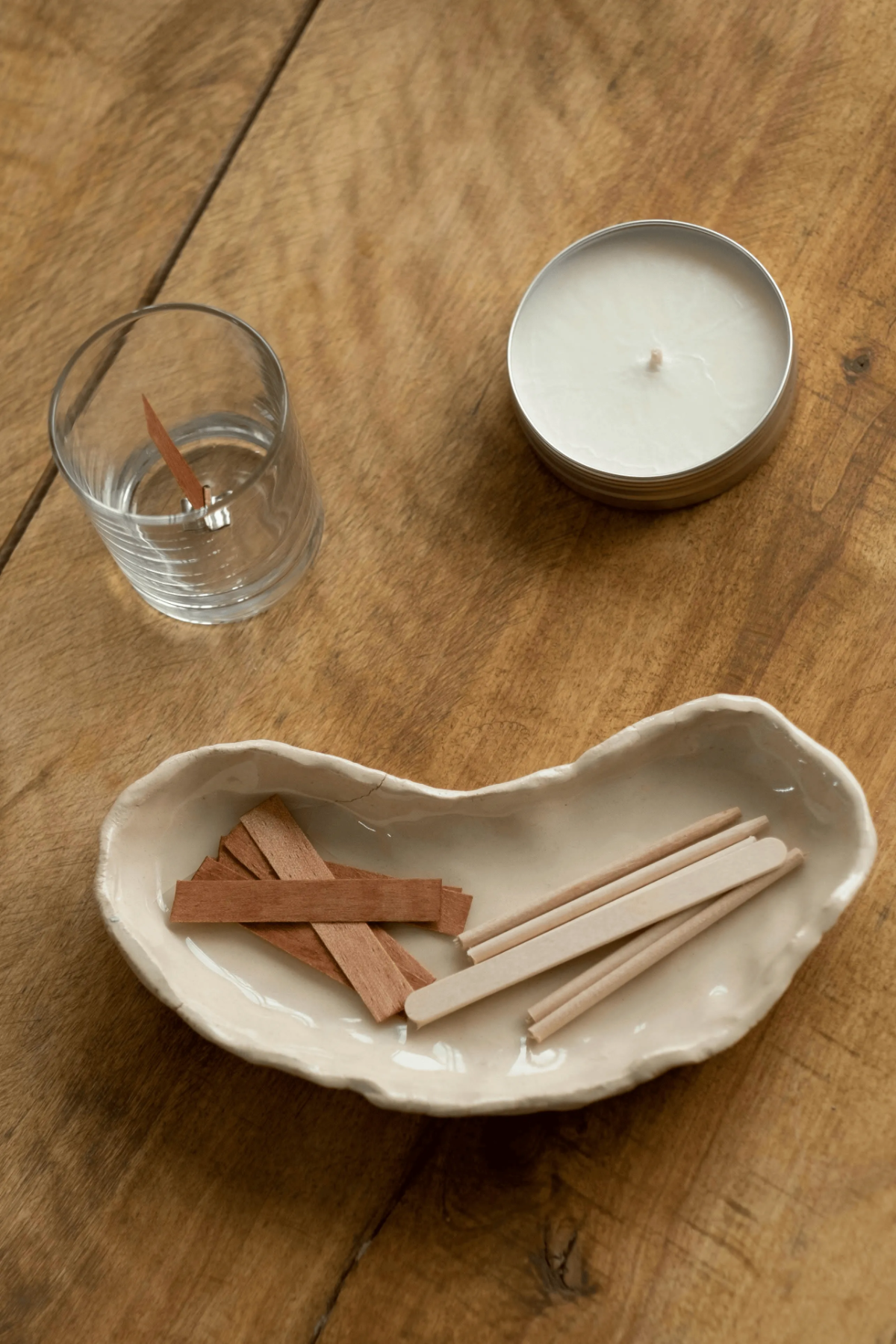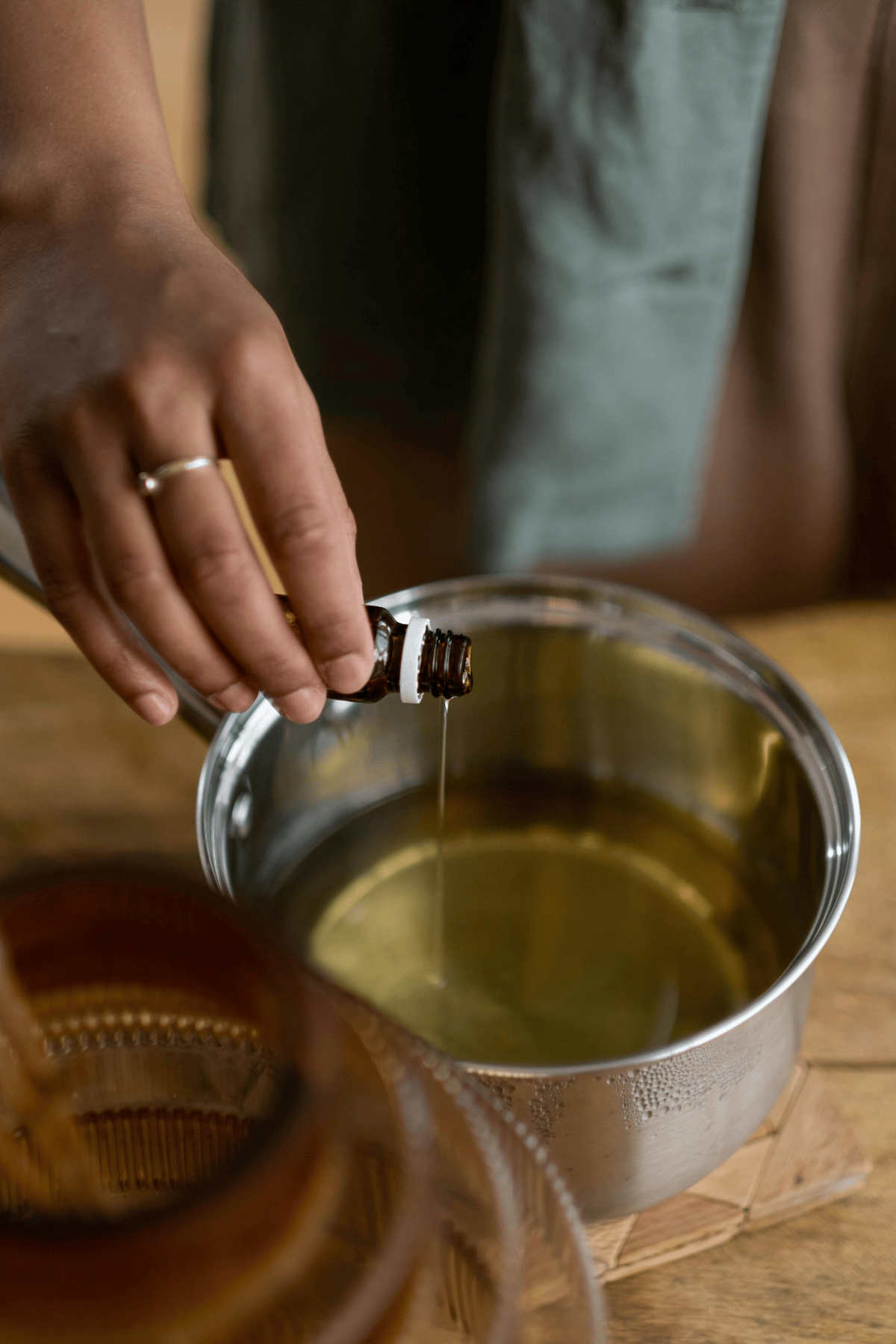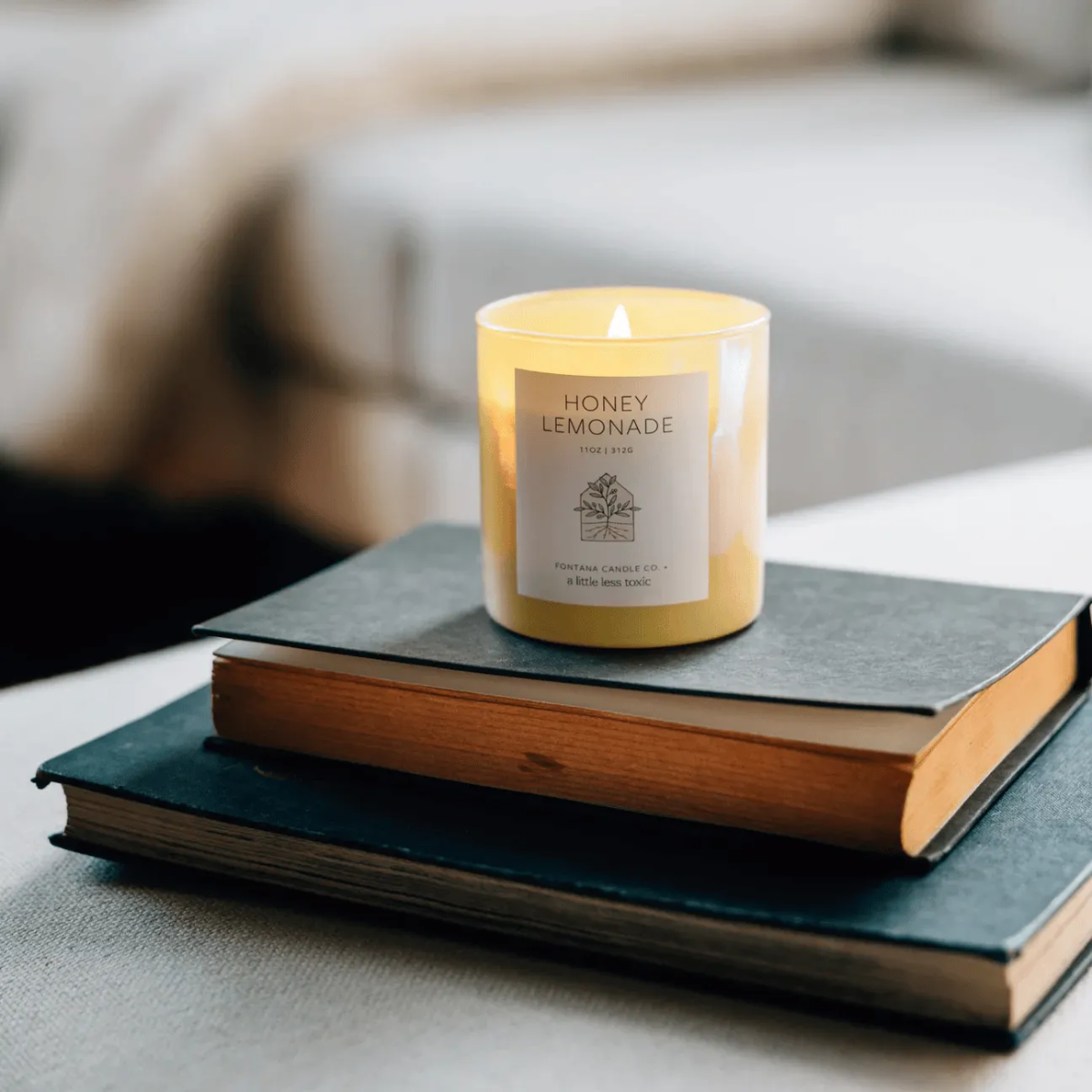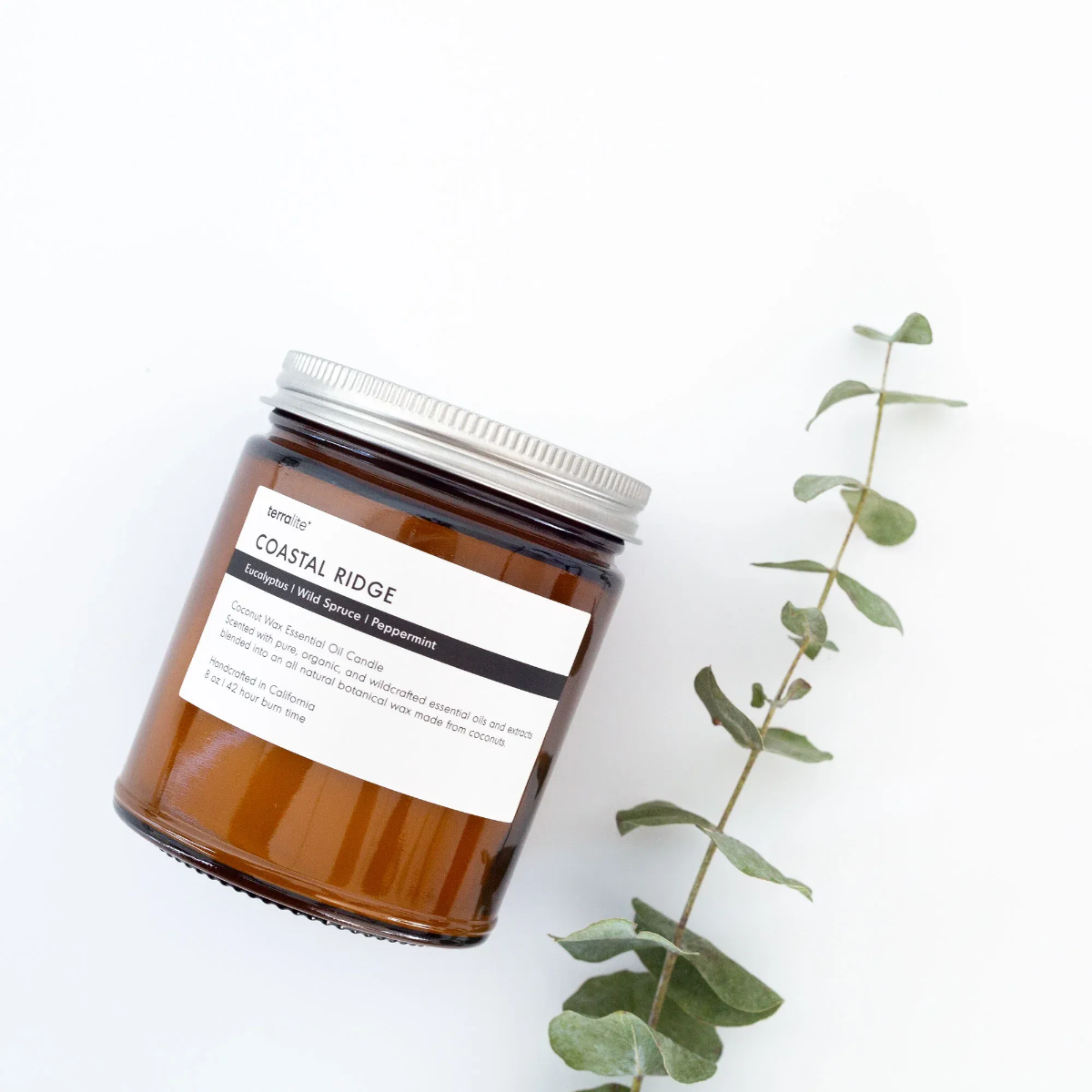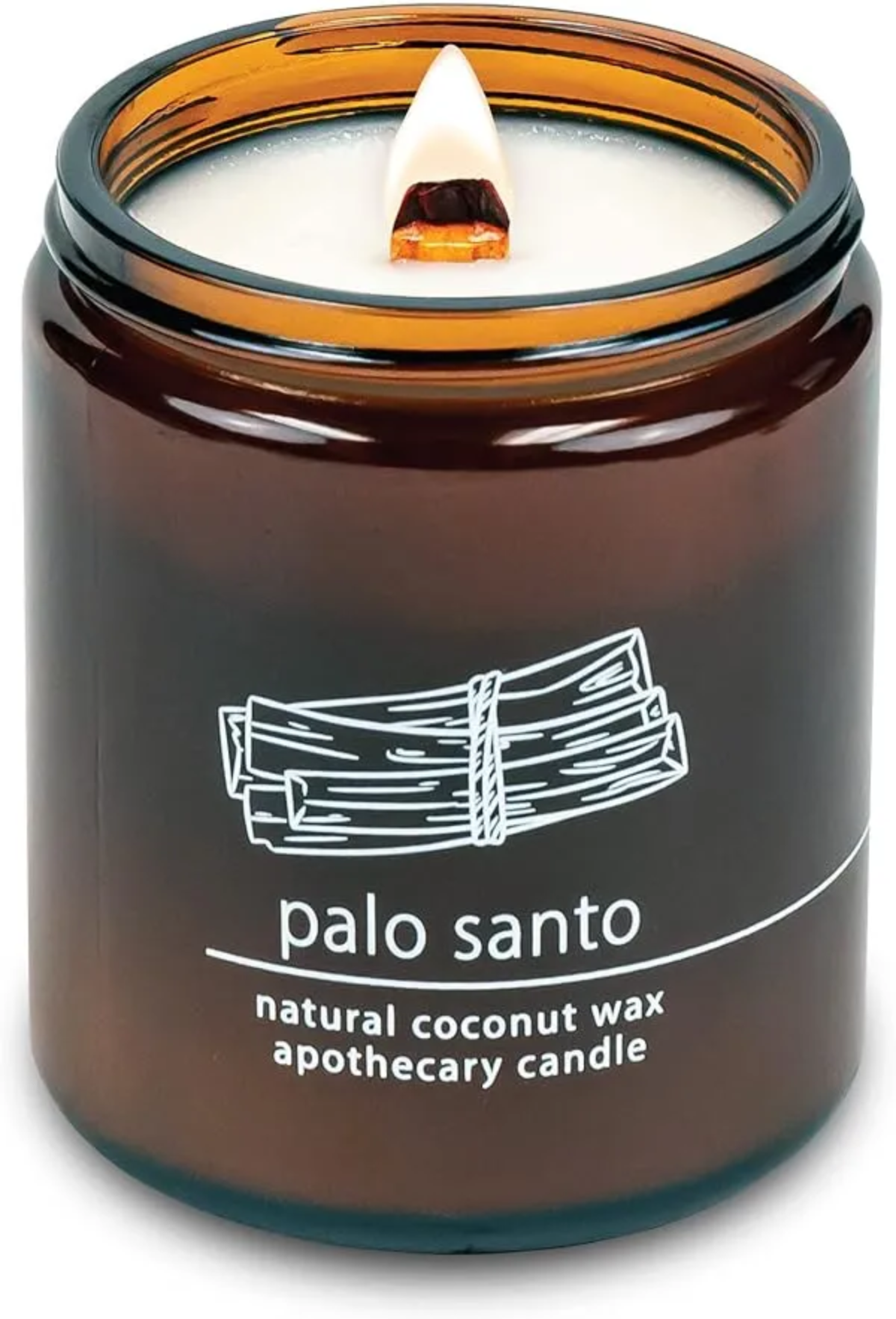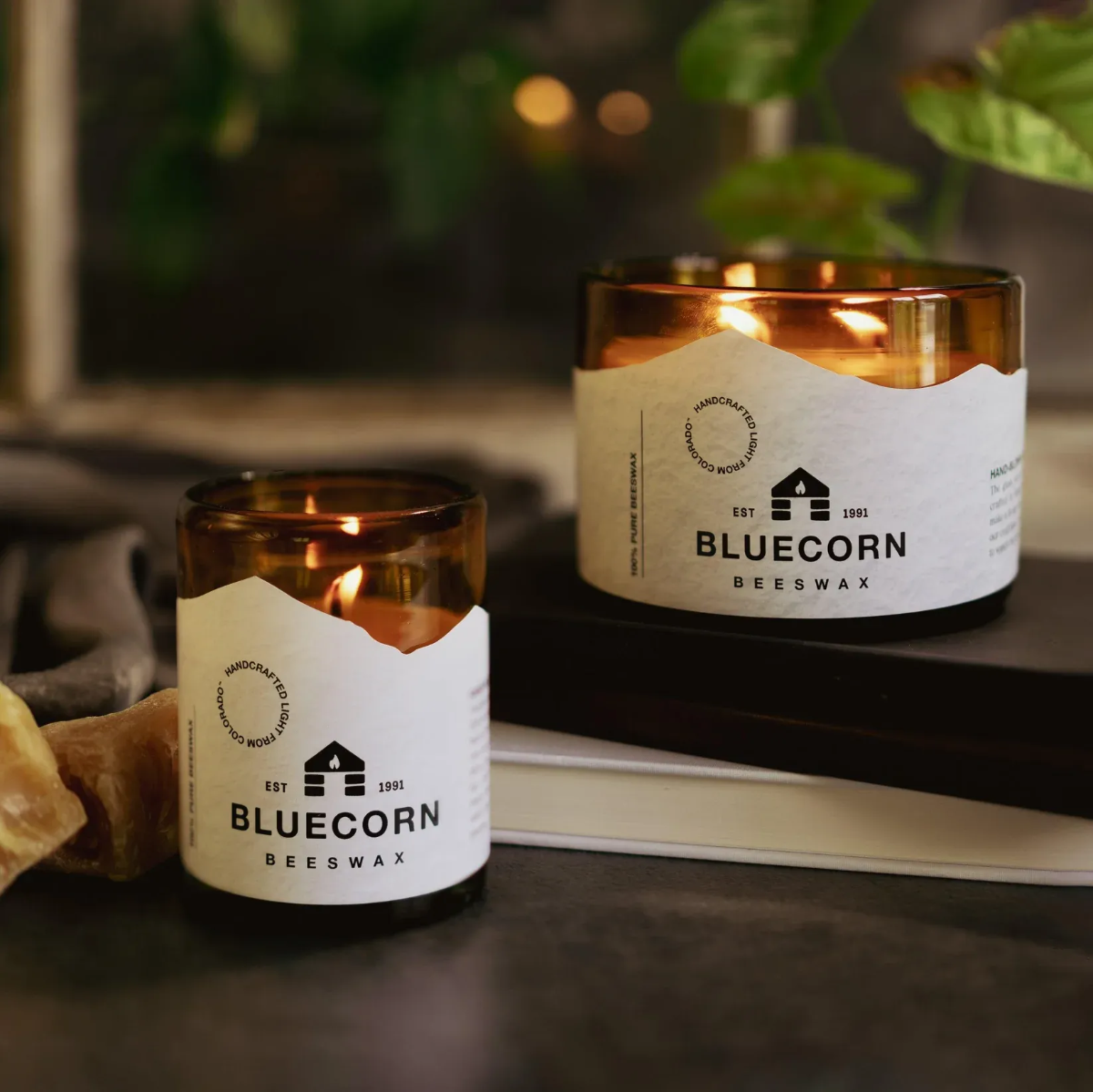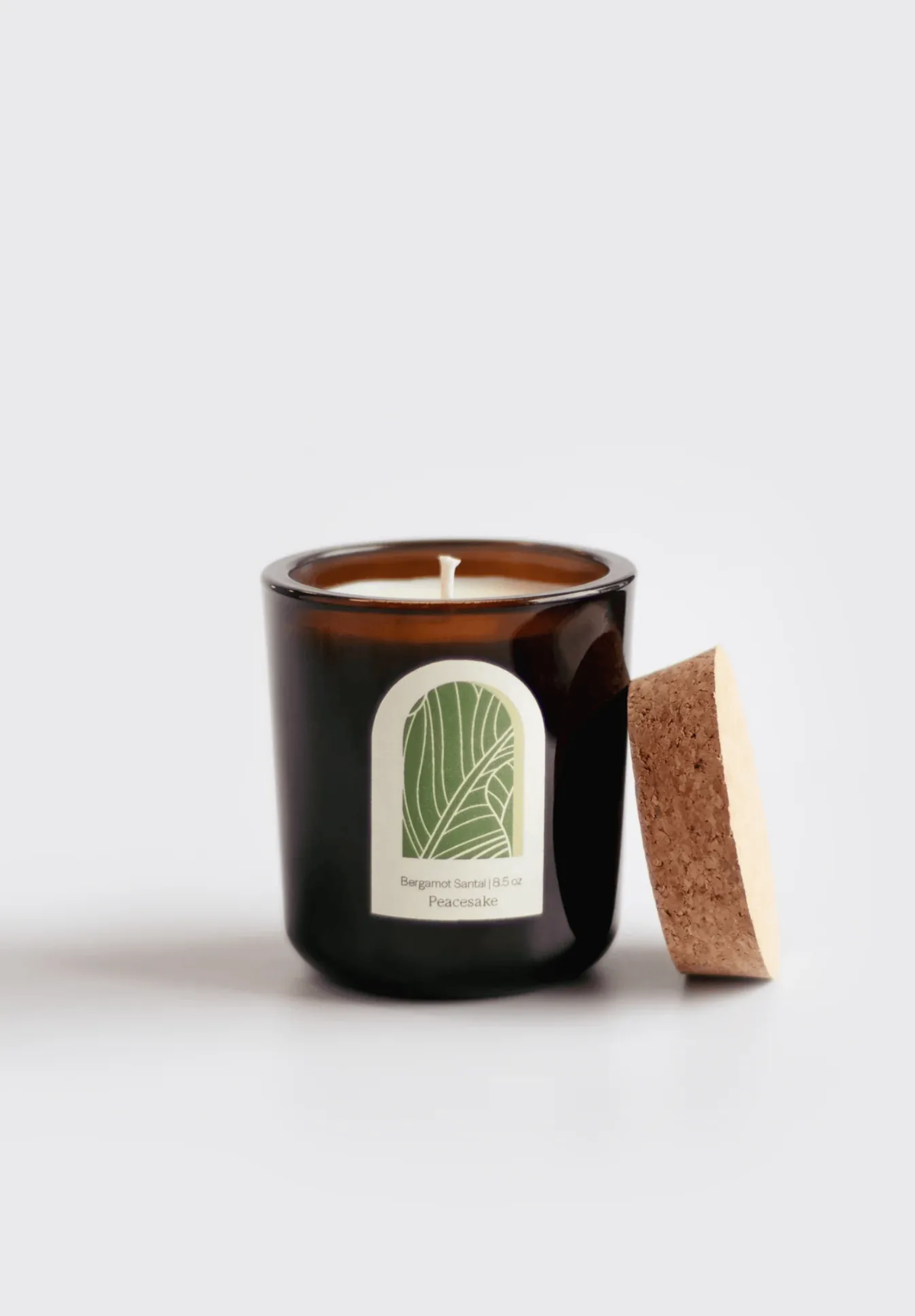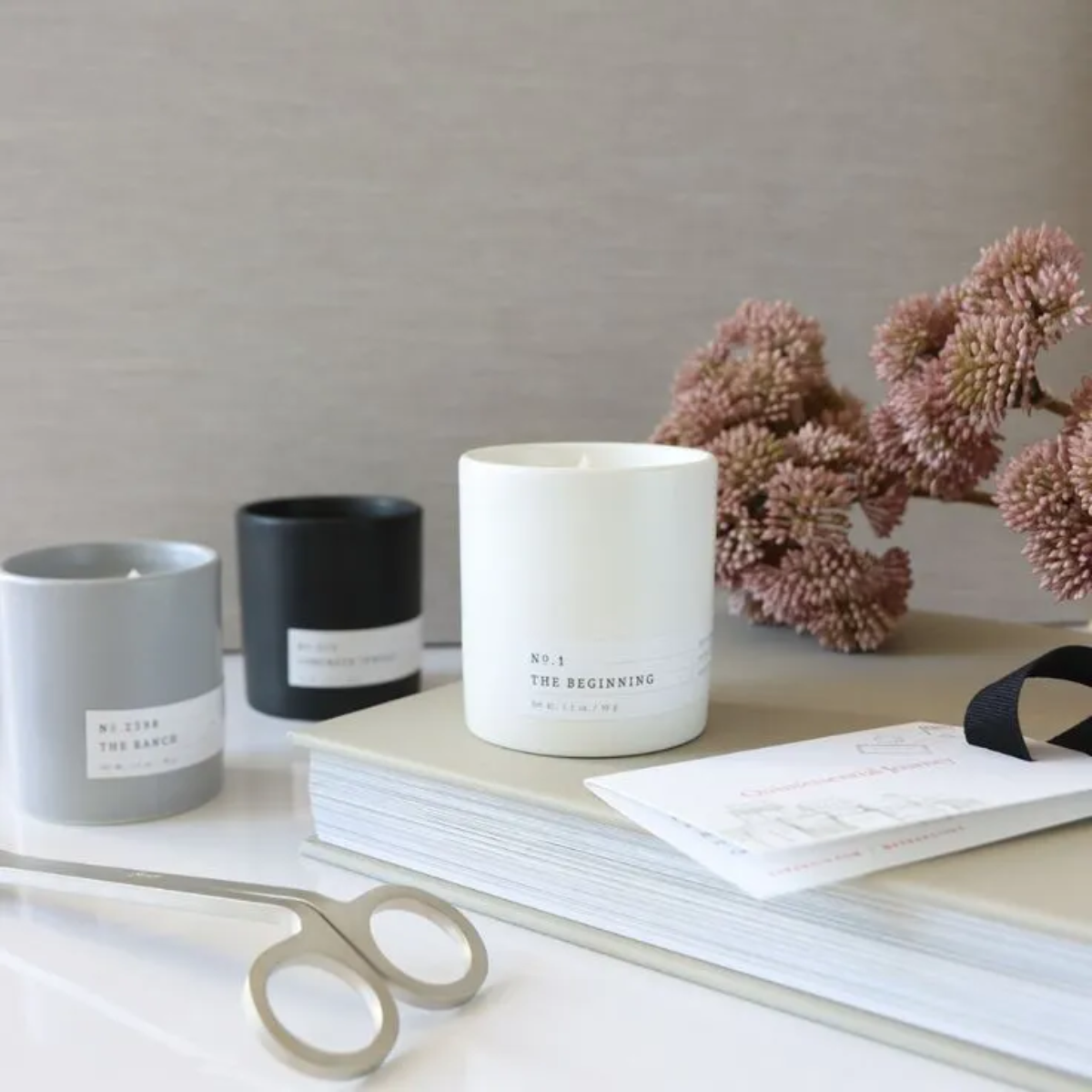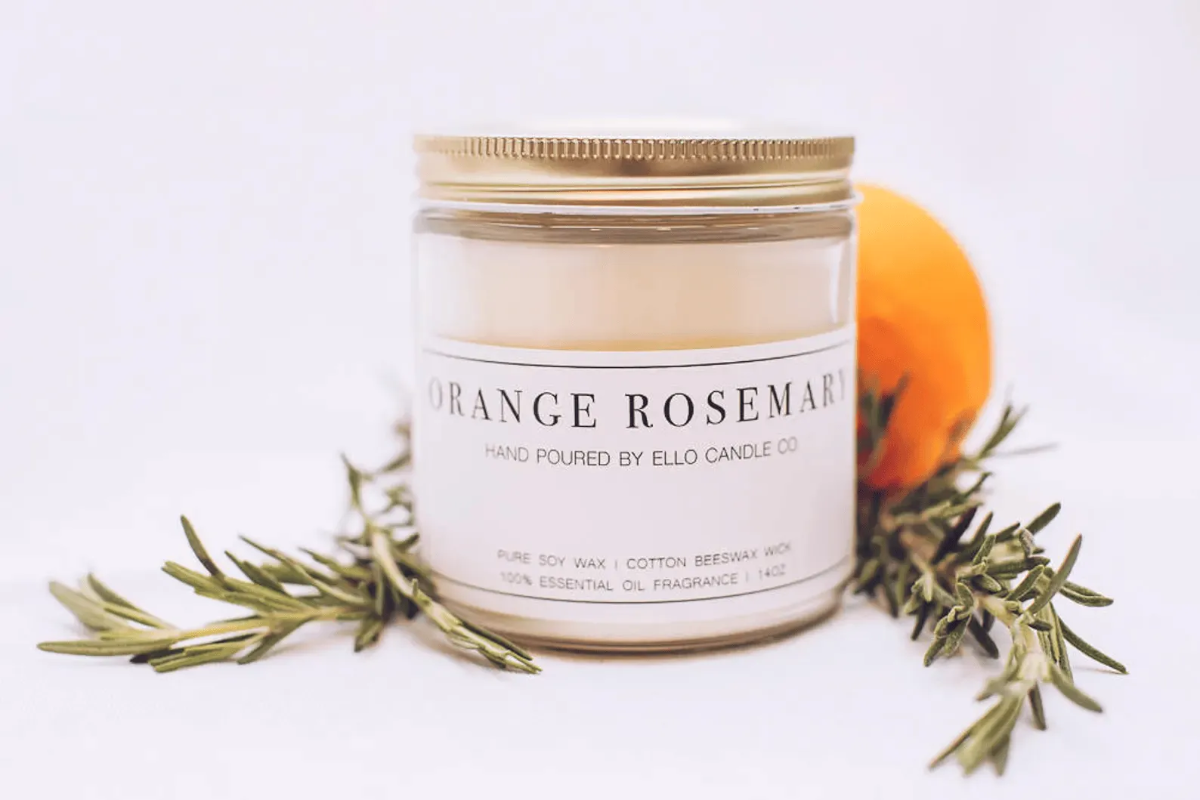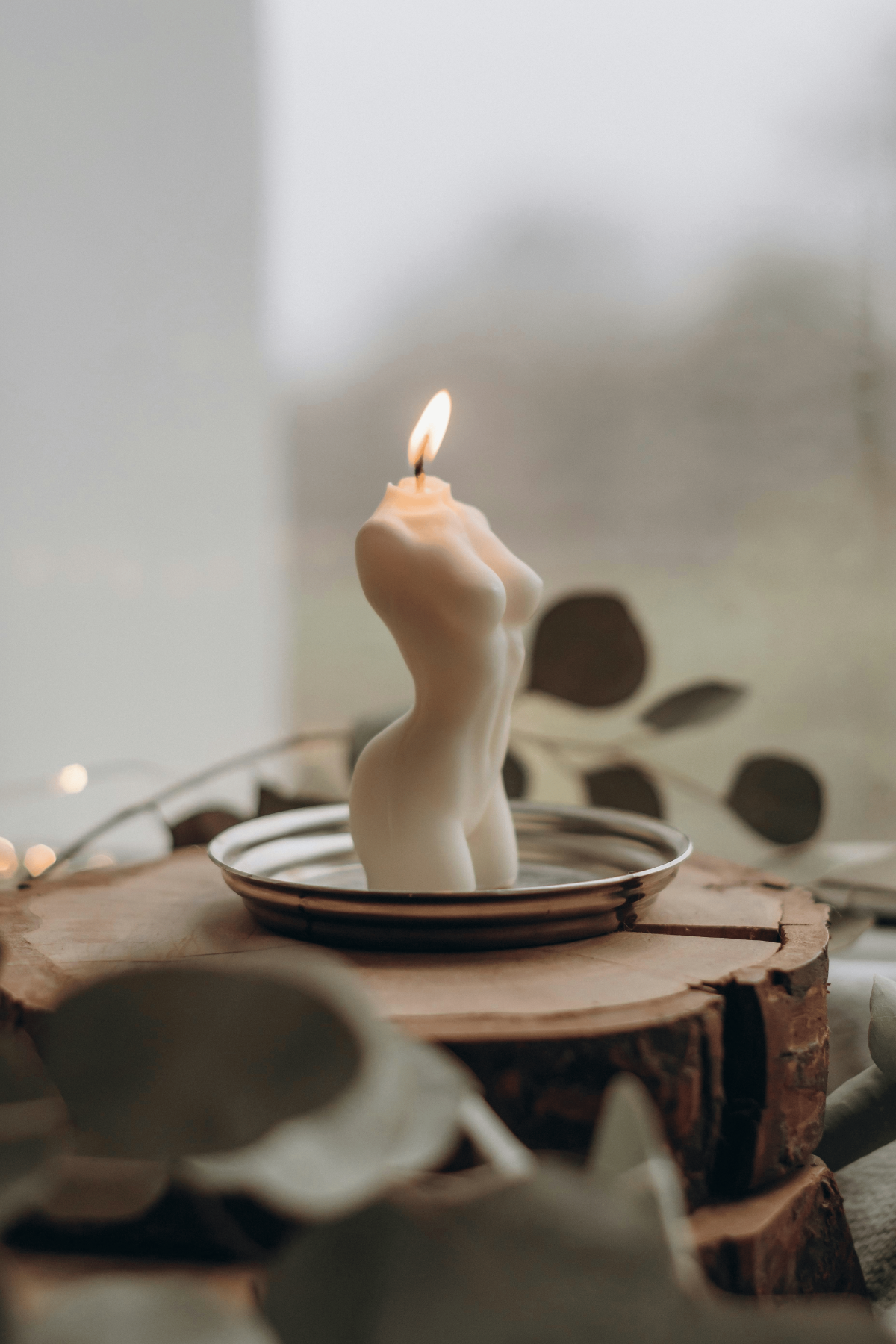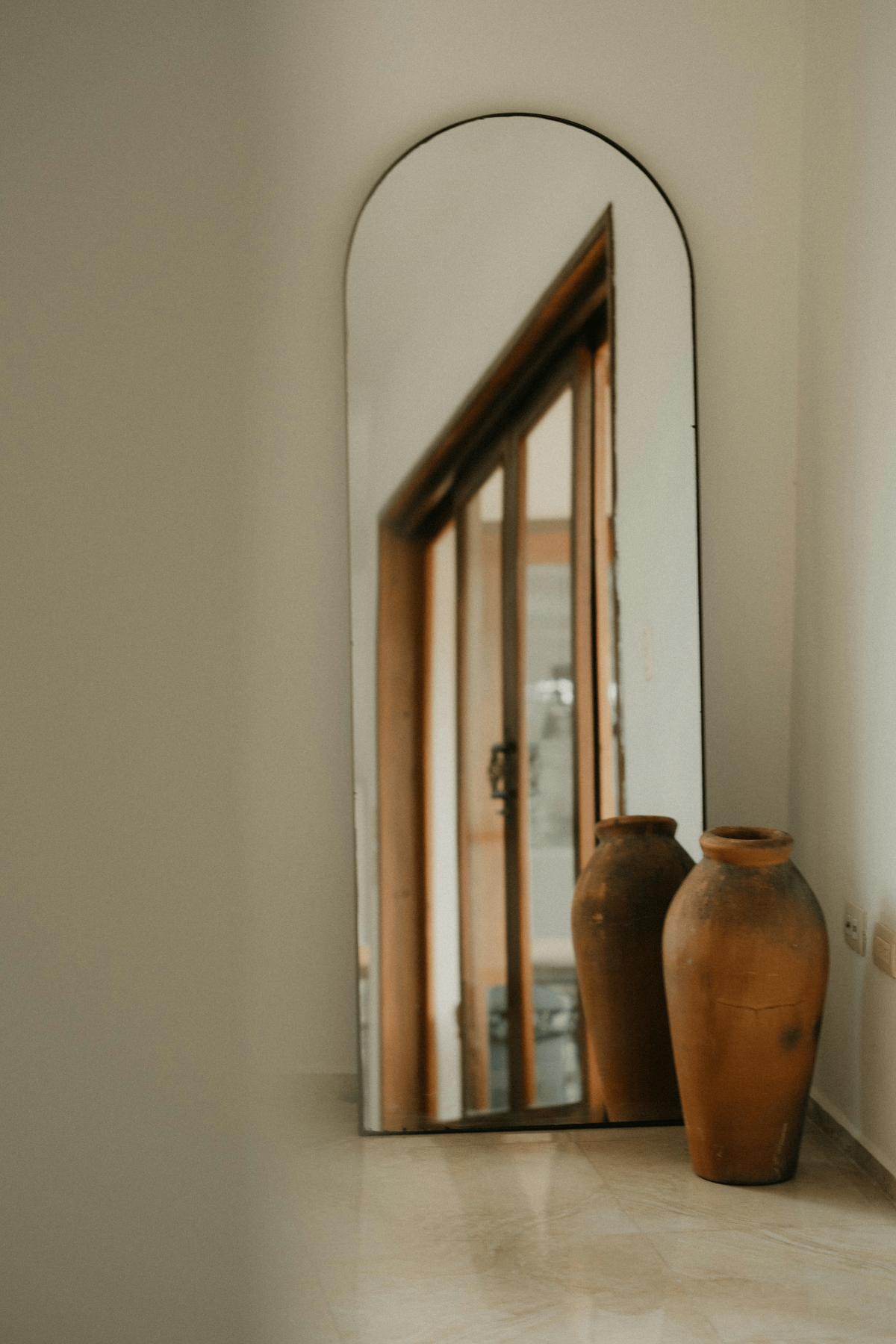Non-Toxic Candle: Clean Burn, Pure Ambience
Last update November 1, 2025
Swap soot for serenity. Discover safe waxes, toxin-free scents, and seven design-forward non-toxic candle brands that deliver a clean burn and pure ambience.
Lighting a candle feels harmless, comfort incarnate in glass. Yet most conventional candles are paraffin-based and fragrance-heavy, quietly releasing volatile organic compounds (VOCs) such as toluene and benzene each time the wick burns. If your wellness rituals include breathwork, incense, or slow living, why puncture that calm with hidden pollutants?
Terra Selene’s mission is to elevate everyday objects into intentional tools for wellbeing. This long-form guide demystifies waxes, wicks, and certifications, then spotlights seven design-forward brands whose candles align with our ethos of nourishment, expansion, and mindful habitat. Along the way, you’ll learn why beeswax candles purify the air, how coconut wax achieves a superior scent throw, and which cotton wick construction guarantees a clean burn.
Table of Contents
Affiliate Disclosure
Some links in this post are affiliate links. That means we may earn a small commission, at no additional cost to you, if you choose to make a purchase. These are always brands, stays, or experiences we would recommend to a dear friend. Thank you for supporting the quiet sustainability of Terra Selene.
The Invisible Smoke: What Makes Most Candles Toxic?
Most conventional candles are still poured from paraffin wax, a petroleum by-product that combusts at high temperatures. New research published in Scientific Reports (March 2025) shows that burning a single scented candle can drive PM₁₀ levels to 1.5 × baseline within five minutes and keep finer PM₂.₅ particles elevated across an entire room long after the wick is snuffed. Fine soot and polycyclic aromatic hydrocarbons (PAHs) readily lodge deep in the lungs and have been linked to cardiovascular and respiratory disease.
Paraffin’s problem compounds when fragrance chemistries enter the mix. A 2024 editorial review in Annals of Medicine & Surgery reports that cheaper, toxic candle brands often rely on petroleum-derived scent additives and azo dyes. Many of these candles use artificial dyes to achieve vibrant colors, but these artificial dyes can pose health concerns when they are burned, as they may release harmful chemicals. When ignited, these additives release harmful chemicals such as formaldehyde, toluene, and benzopyrene—agents associated with headaches, endocrine disruption, and even urothelial cancer.
A parallel 2024 medical-news synthesis notes that 24.8 % of habitual candle users experience symptoms ranging from migraines to shortness of breath. The article highlights that synthetic fragrance oils and phthalates are “hidden” harmful ingredients in many mass-market candles, while metal-cored wicks can shed heavy-metal particles into indoor air. Artificial fragrances are also associated with health risks, as they often contain chemicals like phthalates that can negatively impact well-being.
Taken together, the latest findings confirm that many mainstream candles, especially those laden with artificial scents and dyes, do release harmful chemicals every time they are burned. These conventional candles often contain synthetic chemicals, which further distinguishes them from non-toxic alternatives. In other words, they’re full of “bad stuff” that you don’t want in your home. Opting for waxes made from soy, organic coconut, or pure beeswax, paired with lead-free cotton or wooden wicks and plant-based aromatics, is no longer just a lifestyle preference; it’s a measurable step toward cleaner lungs and a healthier home.
Defining the Non-Toxic Candle
A non-toxic candle is more than a paraffin-free curiosity; it’s a small manifesto of mindful design. At its core lies a base of natural waxes such as soy, organic coconut wax, or pure beeswax, each chosen for a clean-burning chemistry that sidesteps the petroleum soot of conventional blends. These non-toxic waxes are made from natural ingredients, ensuring that non-toxic candles are safer for your health and the environment. These waxes melt at lower temperatures, emit markedly fewer volatile organic compounds, and create a flame that feels more like fresh air than indoor smog. Because nontoxic candles burn cleaner and produce fewer harmful by-products than traditional candles, you breathe easier and dust less often, tiny but tangible wins for daily wellbeing.
Scent is delivered through organic essential oils or rigorously vetted natural fragrances, never the phthalate-stretched synthetics that can trigger headaches and endocrine disruption. The wick, whether lead-free unbleached cotton, FSC-certified wood, or hemp, acts as the candle’s respiratory system, drawing wax upward without introducing heavy metals or chemical stiffeners. Natural candles often use sustainable materials for both the wick and scent, further supporting eco-conscious choices.
Every element honours circularity: jars are refillable or fully recyclable, and the waxes themselves are biodegradable, making disposal gentle on soil and sea. Eco-friendly practices, such as using recyclable packaging, help reduce waste and minimize environmental impact. Labels often bear USDA or ECOCERT markings, signalling true organic candles, while thoughtful makers ship in compostable wrap or lightweight, recycled Kraft cartons. These touches position non-toxic pours squarely within the realm of sustainable candles, reminding us that ambience can, and should, align with ecological integrity.
The takeaway? By choosing a candle built from natural materials that produce fewer VOCs, you’re upgrading both mood and indoor air quality. Your sanctuary glows, lungs relax, and the planet is spared another microdose of fossil fuel fallout. That’s the Terra Selene definition of illumination with intention.
Wax 101: Choosing the Right Fuel for Your Flame
Beeswax – The Air-Purifying Classic
Beeswax is the densest natural wax and has the highest melting point, which translates into marathon burn times. When lit, it emits negative ions that bind to positively charged particles such as dust, pollen, and bacteria, effectively neutralizing pollutants in the room. Its faint honey aroma is subtle, never cloying, and its warm, amber glow fosters an atmosphere of ancestral comfort. Supporting beeswax production also aids bee populations, a regenerative resource that matters for food security.
Coconut Wax – The Velvet Throw
Pressed from organic coconut oil, then refined into a creamy solid, coconut wax delivers an unparalleled scent throw while burning cooler than paraffin. Its silky texture anchors essential oil blends without muting their top notes. Biodegradable and carbon-light, coconut wax is the designer’s darling for white-jar minimalism and smooth melt pools that resist tunneling.
Soy Wax – The Everyday Hero
Harvested from renewable soybean oil, soy wax candles offer a cleaner burn than paraffin, with lower soot output and an accessible price tag that supports large-batch production. Natural soy wax accepts botanical colourants if you enjoy gentle hues without resorting to synthetic pigments. While soy lacks beeswax’s negative-ion magic, it remains a sound, non-toxic option, especially when blended with coconut for improved scent diffusion.
Wicks: The Candle’s Respiratory System
Cotton wicks: Choose unbleached, untreated cotton without metal cores. Unbleached cotton wicks are natural, non-toxic, and eco-friendly, helping to ensure a safer, healthier burn. These wicks curl as they burn, self-trimming and keeping soot minimal.
Wooden wicks: Sustainably sourced wood strips that crackle softly, auditory hygge, and produce a wide, even flame. Ensure FSC certification.
Hemp and cotton blends: Slightly hotter flames that suit thicker waxes like beeswax; always confirm they’re lead-free wicks for safety and non-toxicity.
A poor wick can sabotage even the purest wax, causing mushrooming, excess smoke, or inconsistent melt pools. In short, the hardware matters, choosing the right wick is essential for clean-burning candles.
Scent Integrity: Essential Oils versus Fragrance Oils
Pure essential oils, steam-distilled lavender, cold-pressed grapefruit, therapeutic-grade cedar, offer aroma and subtle wellness benefits without synthetics. They contain no phthalates, formaldehyde donors, or mystery “parfum” blends.
High-quality fragrance oils can be safe if they’re non-toxic, allergen-tested, and free from known endocrine disruptors, but labelling is inconsistent. Look for brands that disclose full ingredient lists or rely exclusively on organic essential oils. Your sinuses (and serotonin) will thank you.
Labels & Certifications: Decoding the Jar
USDA Organic / ECOCERT:
These seals confirm that every wax and scent component meets stringent organic standards, free from GMOs, toxic solvents, and synthetic additives. In other words, they give you complete transparency from field to flame.
Leaping Bunny / PETA Cruelty-Free:
A guarantee that no part of the candle’s supply chain, ingredients, wax processing, or scent blending was tested on animals. Your calming ritual stays fully aligned with compassion.
B Corp:
An independent audit showing the brand balances profit with measurable social and environmental impact. It’s proof that corporate responsibility runs deeper than marketing copy.
GOTS-Certified Cotton (for wicks):
Verifies that the cotton is grown and processed without chlorine bleach, formaldehyde, or other harsh chemicals, ensuring the “natural cotton wick” claim is genuinely clean.
If a candle skips these assurances, pore over the brand’s website for third-party lab results or a complete ingredient list before trusting it with your lungs, and your living room.
Seven Design-Forward Non-Toxic Candle Brands to Know
Fortana Candle Co.
Fontana Candle Co. stakes its reputation on radical simplicity: every jar is a hand-poured marriage of beeswax and organic coconut wax, a crackling wooden wick, and whole-plant essential oils, no fragrance fillers, no dyes, no questionable stabilizers. In 2024, the brand broadened its range with an expanded pure-beeswax collection (unscented tapers, tea-lights, pillars) and introduced scent-intensity tiers so shoppers can choose “light,” “moderate,” or a boosted profile without drifting into synthetics. Signature blends such as Cinnamon Orange Clove, Spiced Latte, and seasonal Honey Lemonade prove that a clean-burning candle can still deliver atmosphere; the jars themselves are clear glass designed for easy refilling or curb-side recycling. By publishing every ingredient, including Latin binomials, on product pages, Fontana models the ingredient transparency Terra Selene stands for.
Terralite
Poured in California, Terralite candles sit in unglazed, matte-white ceramics that can be rinsed and pulverized into a garden aerator once the 36-hour burn (8 oz size) is done. The recipe pairs 100 % natural organic coconut wax with hemp-core wicks and pure, often wild-crafted essential oils, zero paraffin, zero synthetics. Terralite is also a 1 % for the Planet member, channelling sales into environmental causes. Woodlands (fir balsam, spruce, cedar) and Sierra (fir needle, sage, balsam) illustrate why the brand is whispered about for having one of the strongest natural scent throws on the market, big-room ambience without the VOC hit. Packaging is recycled paper, inks are soy-based, and every order ships plastic-free.
Hemlock Park
Washington-based Hemlock Park leans into multi-sensory ritual: FSC wood wicks crackle like a campfire while a coconut-soy wax blend releases essential oils accords inspired by terroir, High Desert, Bergamot Cedar, Yuzu Citrus. Jars start at $14, making them a gateway into sustainable candles without the steep artisan price tag, and the line extends into apothecary bath salts and room sprays for fragrance layering. Collections such as “Passport Travel Inspired” invite slow-living globetrotters to revisit favourite landscapes through scent memory, all poured in small batches and packed in recyclable amber glass.
Bluecorn Beeswax
For purists, Bluecorn offers nothing but white beeswax, braided cotton wicks, and the mellow scent of the hive. Pillars and tapers are gravity-poured for a dense, drip-resistant finish that burns longer than soy or coconut counterparts while emitting the negative ions that help neutralize airborne pollutants. Free-shipping thresholds and bulk bundles make it easier to swap out dining-table tapers en masse, and the company’s blog educates on wick-trimming and ritual use, ideal for meditation, yoga studios, and low-light dinner parties where perfume isn’t welcome.
Peacesake Candles
Detroit-made Peacesake Candles packs 45- to 50-hour burn times into its trademark 14-oz tumblers. A coconut-soy wax blend, phthalate-free essential oils, and cotton-core wicks keep the chemistry honest, while scents like Lime in a Coconut provide holiday-mood escapism even unlit. Labels are pared-back text on clear glass, so the candle slips into any interior palette and up-cycles seamlessly as a storage vessel.
Aerangis
Founded by fragrance-industry alumna Alicia Tsai, Aerangis treats scent as storytelling. Each blend begins with a personal memory. No. 212 Concrete Jungle recalls summer rain on New York asphalt and is poured into handcrafted clay jars from Taiwan’s century-old Shuili Snake Kiln. The plant-based wax (coconut-apricot), lead-free cotton wick, and allergen-free formula align with non-toxic standards, while a biodegradable dust cover embedded with wild-flower seeds transforms packaging into a living keepsake. Every detail, from small-batch pouring to plastic-free shipping, answers Aerangis’ mantra: “true refinement is conscious.”
Ello Candle Co.
Operating out of Easton, Washington, maker Lachelle hand-pours pure soy wax candles labeled Ello Candle Co., scented only with therapeutic-grade essential oils, no paraffin, no synthetic fragrance, no dyes. Cotton-braided wicks coated in white beeswax ensure an even, clean burning melt pool, and consistent five-star reviews (1,100+ sales) praise both aroma and longevity. Hero scent Cinnamon Leaf fills a work-from-home nook with bakery warmth, while Walk in the Woods bottles the cedar-and-fir hush of a Pacific Northwest forest. Every order ships in recycled Kraft boxes and biodegradable peanuts, reinforcing Ello’s pledge to be “as gentle on the planet as on your lungs.”
Final Glow: Choosing Light That Aligns With Your Values
Candles are more than décor; they’re tiny pyres where ingredients transform into atmosphere. By choosing non-toxic alternatives, soy wax, coconut wax, or organic beeswax paired with pure essential oils, you safeguard respiratory health, elevate indoor air quality, and align consumption with planetary stewardship. That flicker on your nightstand becomes a reminder: wellness lives in the smallest decisions repeated daily.
May every strike of the match illuminate your intention, nourish your senses, and keep both lungs and planet breathing easy. Extend that same ethos into the spaces you curate by exploring sustainable ways to furnish a conscious home, where mindful materials and timeless design meet to create sanctuaries that sustain. That’s the Terra Selene way, thoughtful, slow, and radiant.


